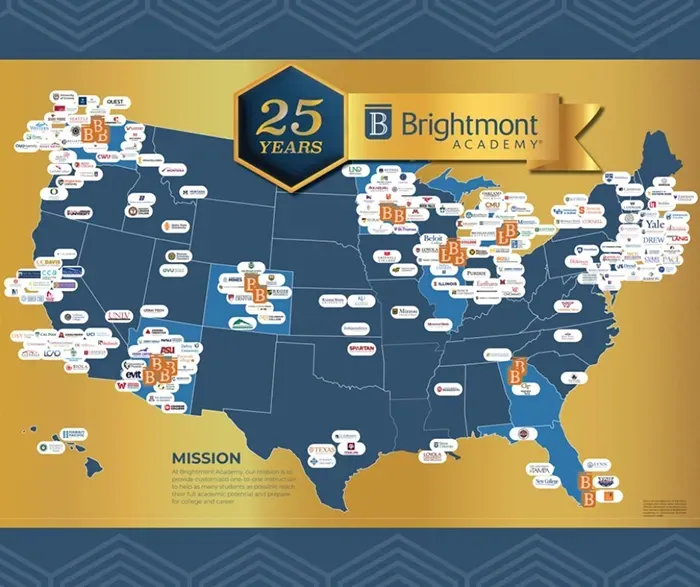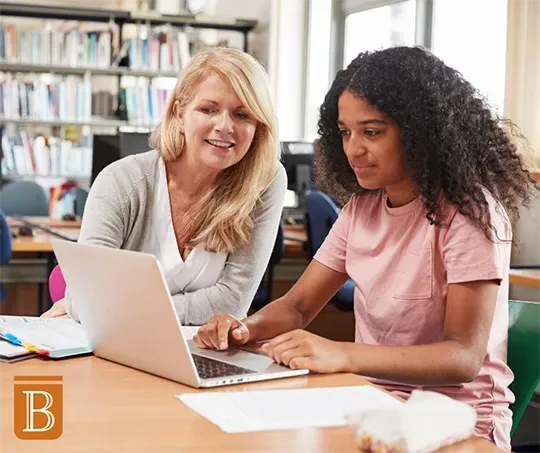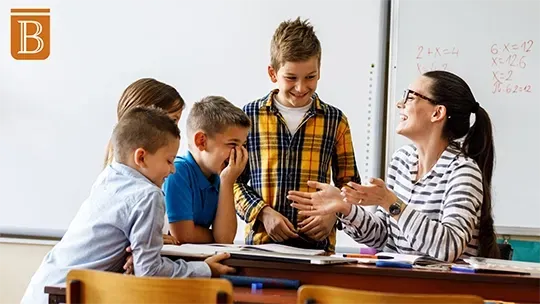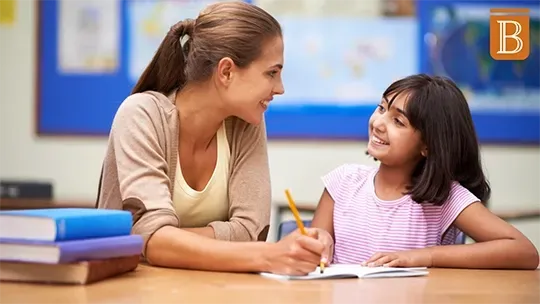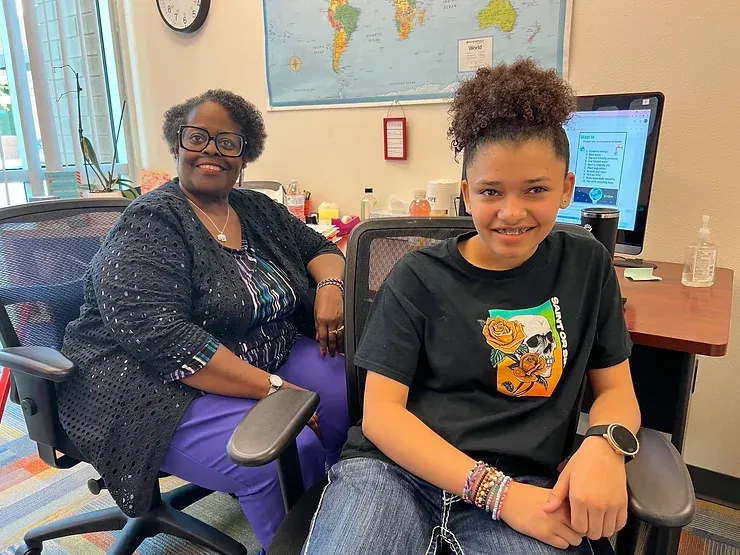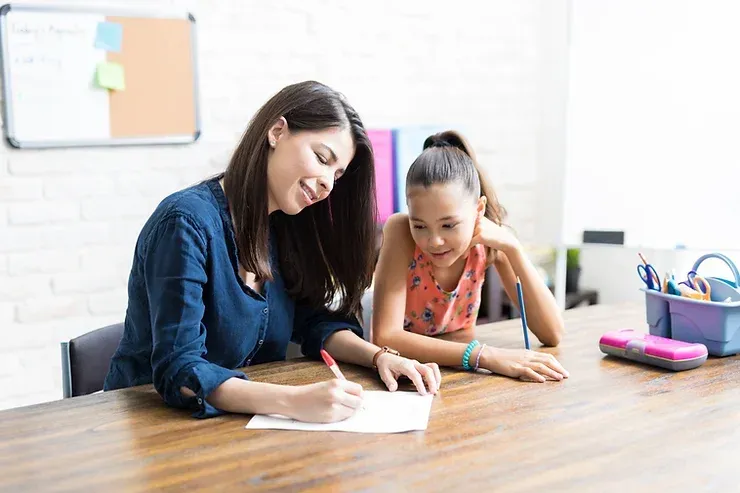Student Responsibility and the G.R.R. model
The 3 Steps of Instruction: Understanding the Gradual Release Approach
It’s a well-known approach among many educational institutions: the Gradual Release of Responsibility model—or “GRR” for short. The key word is “responsibility;” during each step of instruction, responsibility shifts from one person to another. Though GRR is a common and effective practice in many different kinds of learning environments, it proves to be even more successful at a one-to-one private school like Brightmont Academy. Here’s how…

Step 1: Modeling the Material or “I Do”
As one of ,, Brightmont’s core values , “instruction” means presenting material in a way that is individualized, comprehensive, and engaging. It begins with the instructor taking responsibility for not only introducing the material, but also modeling how to approach new content. They “wonder out loud,” ask questions, connect current concepts to past lessons, etc. Why? In short, curiosity is contagious and critical in learning.
At Brightmont, curiosity is nurtured in an even more personal way. This “I do” step of instruction features the observations and questions of the instructor, but their comments are also customized to pique the student’s individual interests. For example, as Monica is introduced to her English lesson about the narrative arc, the instructor recalls the movie Monica mentioned seeing over the weekend, relating how the exciting climax would appear at the top of the arc. In addition, the instructor knows that Monica really enjoys “Would you rather…?” scenarios and poses questions in this manner. In other words, because of the one-to-one environment, the instructor quickly and easily makes very personal connections to the curriculum.
Step 2: Practicing Together or “We Do”
Responsibility is shared in the second step of the GRR approach. It’s when “I do” becomes “we do” as the material is reviewed and practiced together.
In many academic settings, this step often looks like students working together with the instructor as supervisor, not participant. In contrast, a Brightmont instructor is just as involved in this second step. It takes the form of an apprenticeship of sorts during which the student continues to have coaching from and constant access to the expert, the instructor.
Consider a student named Ian. His Science class entails numerous labs, but his instructor uses these activities to demonstrate the principles covered during Step 1. The instructor also evaluates Ian’s understanding of those principles as they conduct experiments, discuss their observations, and document their findings. In the end, as his instructor’s so-called apprentice, Ian is much more prepared and confident to show authentic independent mastery of the material, the next step of the GRR approach.
Step 3: Achieving Student Mastery or “You Do”
During Step 3 or the “you do” portion of GRR, the student assumes responsibility for the material. This is often accomplished through independent projects and writing assignments that help the student internalize and communicate the concepts they have studied and practiced.
Like other schools, Brightmont relies on essays, research papers, quizzes, and tests to measure student understanding. However, at Brightmont, it doesn’t stop with earning a grade, perhaps receiving a few ancillary comments from the instructor. All students are expected to show at least 80 percent mastery of their course material. If they don’t, the instructor returns to Step 1 of GRR and re-strategizes their teaching methods. On the flip side, if the student does show mastery, the instructor and student celebrate together, taking note of the areas where the student did especially well and where they might still have gaps. In other words, at Brightmont, there’s no getting around knowing exactly where a student stands in their learning—every day, all of the time.

Remember that word “responsibility”? How it’s the theme of the GRR approach? Well, thanks to Brightmont’s unique use of GRR, responsibility also becomes a noticeable and lasting character trait among our students. There’s no chance of them slipping through the cracks. There’s no chance of their needs being back burnered. There’s no chance our students won’t know we’re invested in their education—it’s hard for them not to follow suit. “You cannot escape the responsibility of tomorrow by evading it today,” said Abraham Lincoln. In turn, we trust Brightmont students will experience very bright tomorrows!
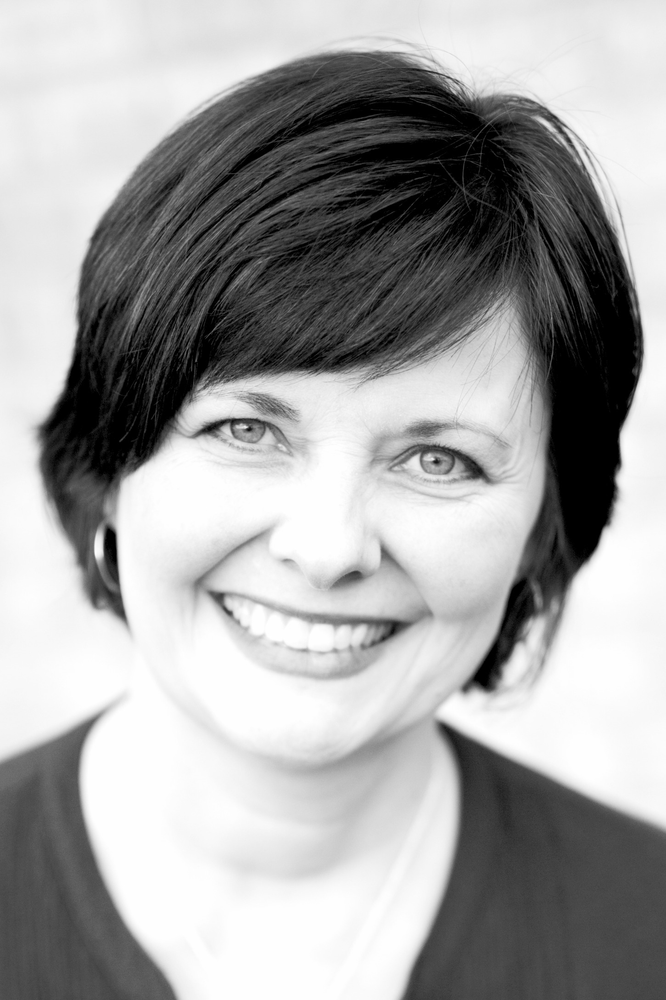
Barbara Farland is an English & Social Studies instructor at Brightmont Academy in Plymouth, Minn. She holds a master’s degree in Business Communication from the University of St. Thomas and, prior to pursuing a second career in education, worked as an award-winning public relations and communications professional in both the corporate and nonprofit sectors. As a “storyteller by nature and teacher at heart,” Barbara continues to contribute to various anthologies, among other writing projects.
More Blog Posts + News
